|
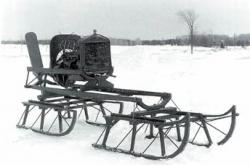
|
1 - Among the many achievements of J.A. Bombardier is, at the beginning in 1922, this sled powered by a propeller. Others were built but the process was considered as dangerous.
http://patentpending.blogs.com/patent_pending_blog/automobile/page/2/
http://www.bombardiermuseum.com/en/content/jab/biographie1907_1925.htm
|
|
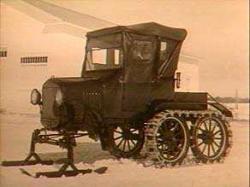
|
2 - Prototype in 1928 of steel tracks around the rear wheels of a Model T Ford, looking like Virgil D. White Snowmobile already mass produced in the 1917.
http://www.bombardiermuseum.com/en/content/jab/biographie1926_1938.htm
|
|
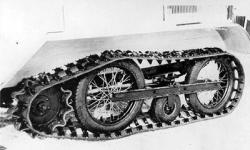
|
3 - After many prototypes, it's this flexible track system with reinforced rubber strips connected by steel cross which was withheld and patented in 1936-37. The sprocket engages in steel crosses.
http://www.bombardiermuseum.com/en/content/jab/biographie1926_1938.htm
|
|
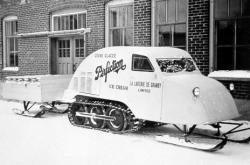
|
4 - B7 Snowmobile of 1939 with the famous system of tracks and guiding ski in the front, wooden body, powered by a Chevrolet engine.
http://www.bombardiermuseum.com/en/content/jab/biographie1926_1938.htm
|
|
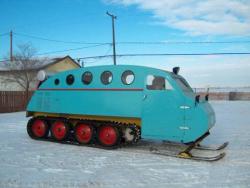
|
5 - B12 Snowmobile. The earliest dates from 1942. This one is restored.
|
|
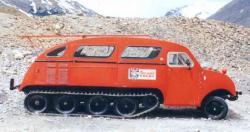
|
6 - B12 Snowmobile equipped with front wheels instead of skis. They were manufactured from 1951. Subsequently, they changed their wooden body for aluminum.
http://www.snow-groomer.com/index.php?cat=12, excellent site
|

|
7 - Snowmobile Mark I of 1943. 1900 Bombardier vehicles were assembled at Montreal and delivered to the Army between 1942 and 1946.
http://www.bombardiermuseum.com/en/content/jab/biographie1939_1945.htm
|
|
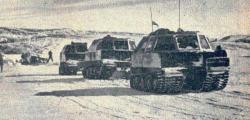
|
8 - The Penguin in closed body, derived from modified Mark III, traveled thousands of miles during the Musk-Ox Canadian expedition of 1946, in the Great North. Pict of review 'Science et Vie', Feb 1949.
|
|
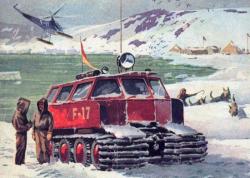
|
9 - Here is a design of Penguin Mark III during the same expedition on the cover of the review 'Science and Life' (Science et Vie) in February 1949. They can notice that the tracked train represented here is not accurate.
|
|
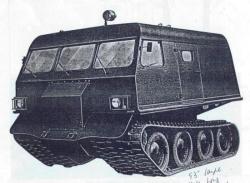
|
10 - Polar expeditions around 1949 also used other 'Canadian Snowmobile Penguin Mark III' closed cab. Pict J M M collection (from Bombardier).
|
|
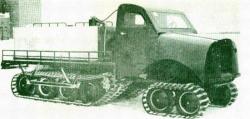
|
11 - TD Snowmobile-truck of 1950 equipped with non-driven front tracks. The TN could change its front tracks for wheels. Pict J M M collection.
|
|
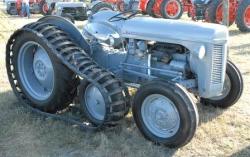
|
12 - TTA (Tracking Tractor Attachment), additional semi-tracked for a farm tractor, here a Ferguson. Licenses will be granted to many manufacturers throughout the world for many years.
|
|
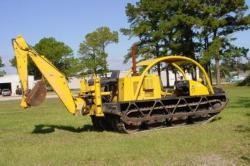
|
13 - Beautiful Muskeg with backhoe recently for sale.
http://www.pic2fly.com/Crawler+Backhoe.html
|
|
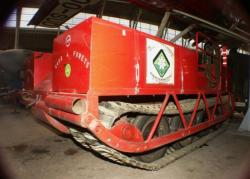
|
14 - Muskeg of Aviation Museum of Brussels pictured by J M Maclou in February 2008 and used by firefighters of Eupen-Malmedy, Belgium, after use in 1957 by members of the Belgian Antarctic Expedition.
|
|
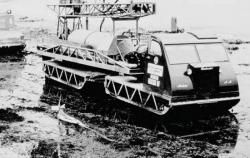
|
15 - The Muskeg MM of 1957 is equipped with four track drive for petroleum industry but also transport of cement for construction of pipelines.
|
|
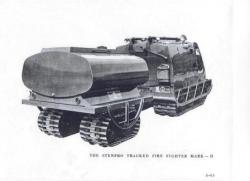
|
16 - Muskeg and the tank-trailer (unpowered) for Fire Service. J M M collection.
|
|
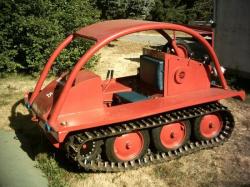
|
17 - The J-5 model, shorter and narrower than the Muskeg, designed to work in forests or farms released in 1955. It existed also a non-drive tracked trailer.
http://www.joesgarage.us/muskeg.htm
|
|
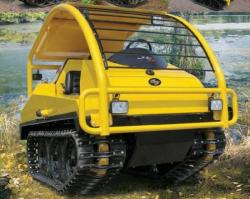
|
18 - J-5 FF of Camoplast around 2005. Pict from a Brochure.
|
|
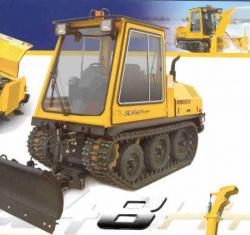
|
19 - SW 48 with 108-hp Perkins engine and hydrostatic transmission, very narrow (1.285 m width) was used to clear snow from sidewalks. Pict from a brochure.
|
|
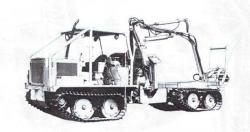
|
20 - The articulated and hydrostatic skidder Qua-Trac, all track drive, suspension arm, speed 20 km / h. Pict J M M collection (from Bombardier via Francis Pierre).
|
|
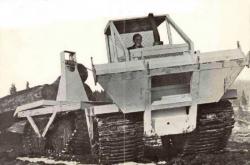
|
22 - Front View of a TM 15, pretty impressive. Pict J M M collection (from Bombardier via Francis Pierre).
|
|
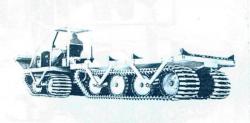
|
23 - Terrain Master TM 20 in 1974 looks great with its long rear tracks. Pict J M M collection (from Bombardier via Francis Pierre).
|
|
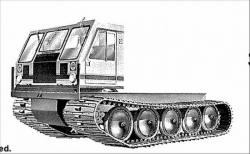
|
24 - B15, industrial vehicle of the late 70s, with a mass of 25 T and 15 T payload for 0.29 kg/cm² pressure on the ground, could receive petroleum or public works equipment. Clark Powershift transmission, steering by controlled differential, suspension by arms and hollow rubber pads working in compression. Pict from an on line brochure.
|
|
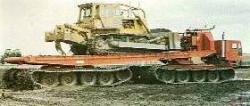
|
25 - TF 900 Terraflex carrying a Caterpillar D8, was actually a Foremost-Nodwell RN-400. Pict from a brochure.
|
|
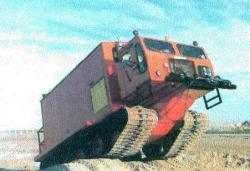
|
26 - Similarly, in the service truck sold under the brand Terraflex TF-240 by Bombardier hiding a Foremost Nodwell RN-240. Pict from a brochure.
|
|
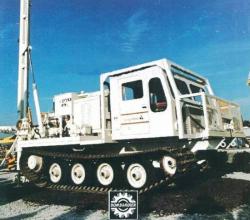
|
27 - Go-Tract GT 1000, medium carrier of Bombardier capacity of 4.5 T, fitted with an auger and used for geophysical research.
http://en.prinoth.com/Utility-Vehicles/Go-Tract%C2%AE
|
|
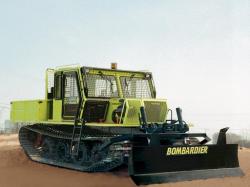
|
28 - Go-Tract GT 2000 equipped with bulldozers, power 250 hp and suspension arm, 8 km / h maximum.
http://en.prinoth.com/Utility-Vehicles/Go-Tract%C2%AE
|
|
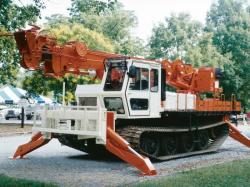
|
29 - Go-Tract GT 3000 of Camoplast, changed into an all-terrain crane truck.
http://en.prinoth.com/Utility-Vehicles/Go-Tract%C2%AE
|
|
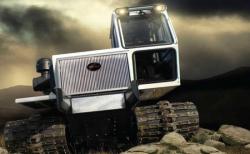
|
30 - Go-Tract GT 4500, now marketed upscale by Prinoth, has a payload of 20 tons to 16 tons empty, turbo-diesel engine Caterpillar C-9 of 375-hp, surface pressure 0.3 kg / cm² with 1.092 m tracks width, hydrostatic transmission, suspension arm.
http://en.prinoth.com/Utility-Vehicles/Go-Tract%C2%AE
|
|
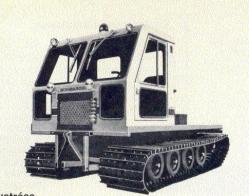
|
31 - Ski-Dozer 252G in 1974. The sprockets were aluminum coated with polyurethane, independent suspension with rubber blocks working in torsion, hydraulic power steering in option. Pict J M M collection.
|
|
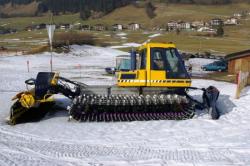
|
32 – Snow-grooming BR 400, 250 HP John Deere and hydrostatic steering, available on the market in the 90s.
|
|
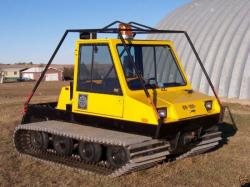
|
33 - Bombi or BR100 as it stood in 1974. The ground pressure of 0.04 to 0.05 kg/cm² varied among caterpillars, winter or summer. 4 cylinders in line 1.6-liter Ford Engine, 2.7 m long and 1.8 m wide. It was used for grooming and fast transit.
|
|
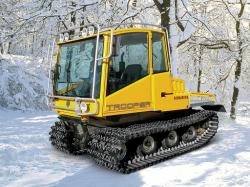
|
34 - Trooper used to 4 seasons transport of 4 persons on snow and rough terrain weighs 3.5 T + 1.5 T payload. Possible choice between 5 different types of caterpillars. This vehicle is now sold by Prinoth.
http://en.prinoth.com/Utility-Vehicles/Trooper%C2%AE
|
|
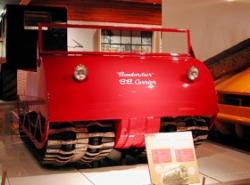
|
35 - This nice little 3 seats amphibious vehicle powered by 57 hp Simca, mass of 1.4 T for 450 kg of payload, the BB Carrier, here restored, is exposed to the Bombardier Museum of Valcourt since 2007.
http://www.bombardiermuseum.com/en/content/collectionneurs/bombardier_BB_carrier.html
|
| |
|
| |
|

































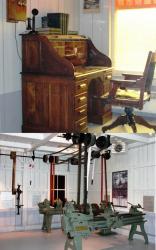
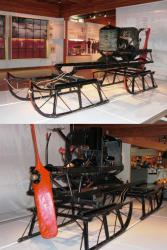
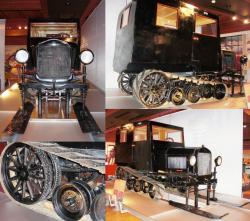
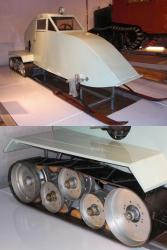
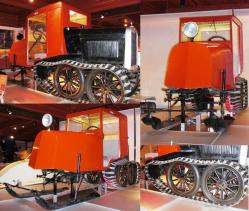
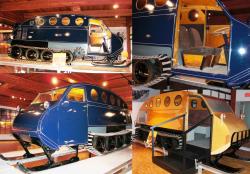
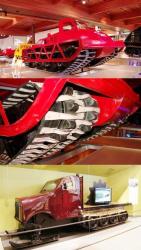
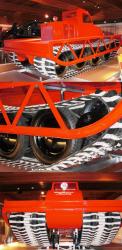
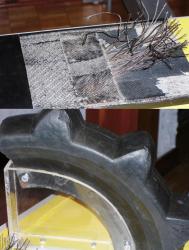
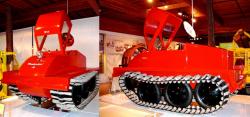
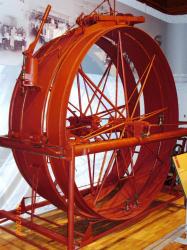
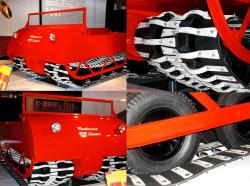
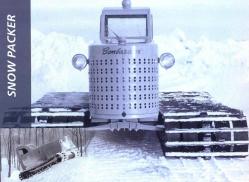
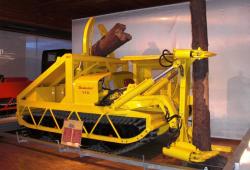
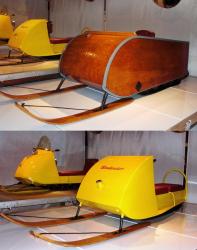
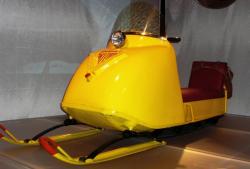
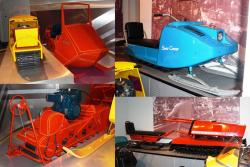
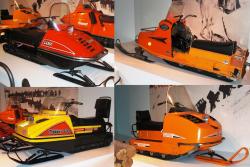
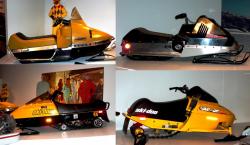
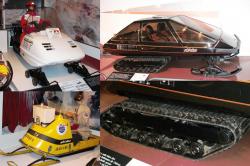
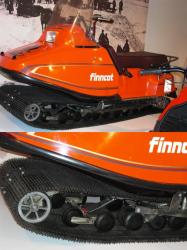
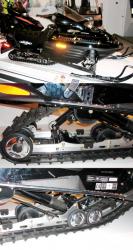
 Français
Français
 English
English
 Español
Español
 Italiano
Italiano
 Deutsch
Deutsch
 Nederlands
Nederlands
 Portuguesa
Portuguesa